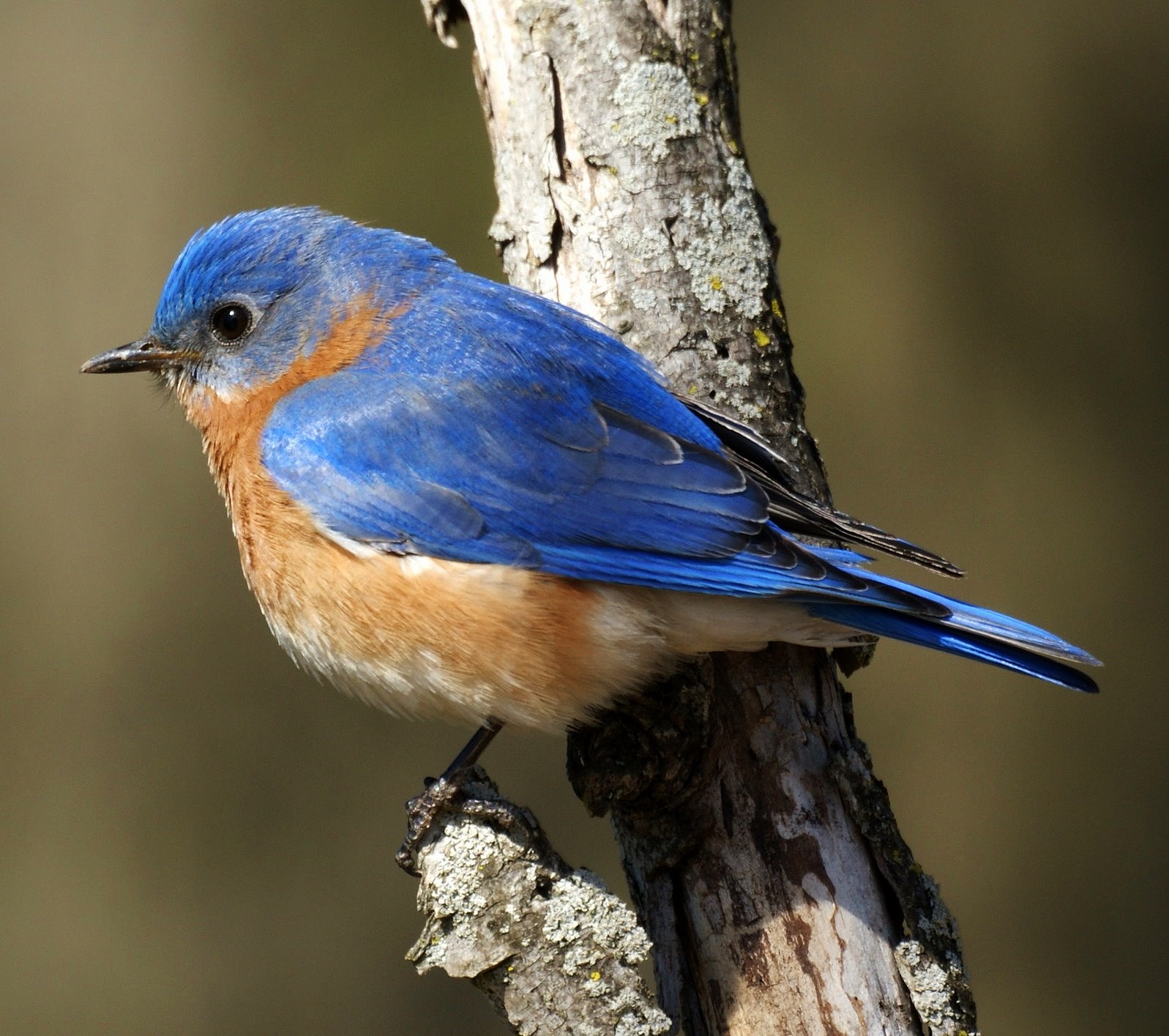 |
| (Photo from New Jersey Birds) |
Common name:
eastern blurbird (en); pássaro-azul-oriental (pt); merlebleu de l’Est (fr); azulejo gorgicanelo (es); rotkehl-hüttensänger (de)
Taxonomy:
Order Passeriformes
Family Turdidae
Range:
This species is found breeding in the eastern United States, in south-eastern Canada and in Central America from Mexico down to northern Nicaragua. The more northern population migrate south to winter along the southern parts of the range.
Size:
These birds are 16-21 cm long and have a wingspan of 25-32 cm. They weigh 27-34 g.
Habitat:
Eastern bluebirds are found in open areas near trees, particularly pastures, grasslands with scattered trees, forest edges, parks and gardens, agricultural fields and also marshes and swamps. They are found from sea level up to an altitude of 2.700 m.
Diet:
They forage on the ground, mainly eating insects such as caterpillars, beetles, crickets and grasshoppers, as well as spiders. During autumn and winter they feed largely on fruits and berries, namely mistletoe, sumac, blueberries, black cherry, tupelo, currants, wild holly, dogwood berries, hackberries, honeysuckle, bay, pokeweed, and juniper berries. They are also known to sometimes eat salamanders, shrews, snakes, lizards, and tree frogs.
Breeding:
The eastern bluebird breed in March-August. The nest is built by the female, consisting of a small cup of woven grasses and pine needles, lined with fine grasses and occasionally horse hair or turkey feathers. The nest is placed in a natural tree cavity or in a nest box, up to 18 m above the ground. The female lays 3-7 pale blue eggs, which are incubated by both parents for 11-19 days. The chicks are fed by both parents and fledge 15-21 days after hatching. Each pair may raise 1-3 broods per season.
Conservation:
IUCN status – LC (Least Concern)
This species has a very large breeding range and the global population is estimated at 10 million individuals. In North America the population has undergone a large increase of 30% per decade over the last 4 decades.







